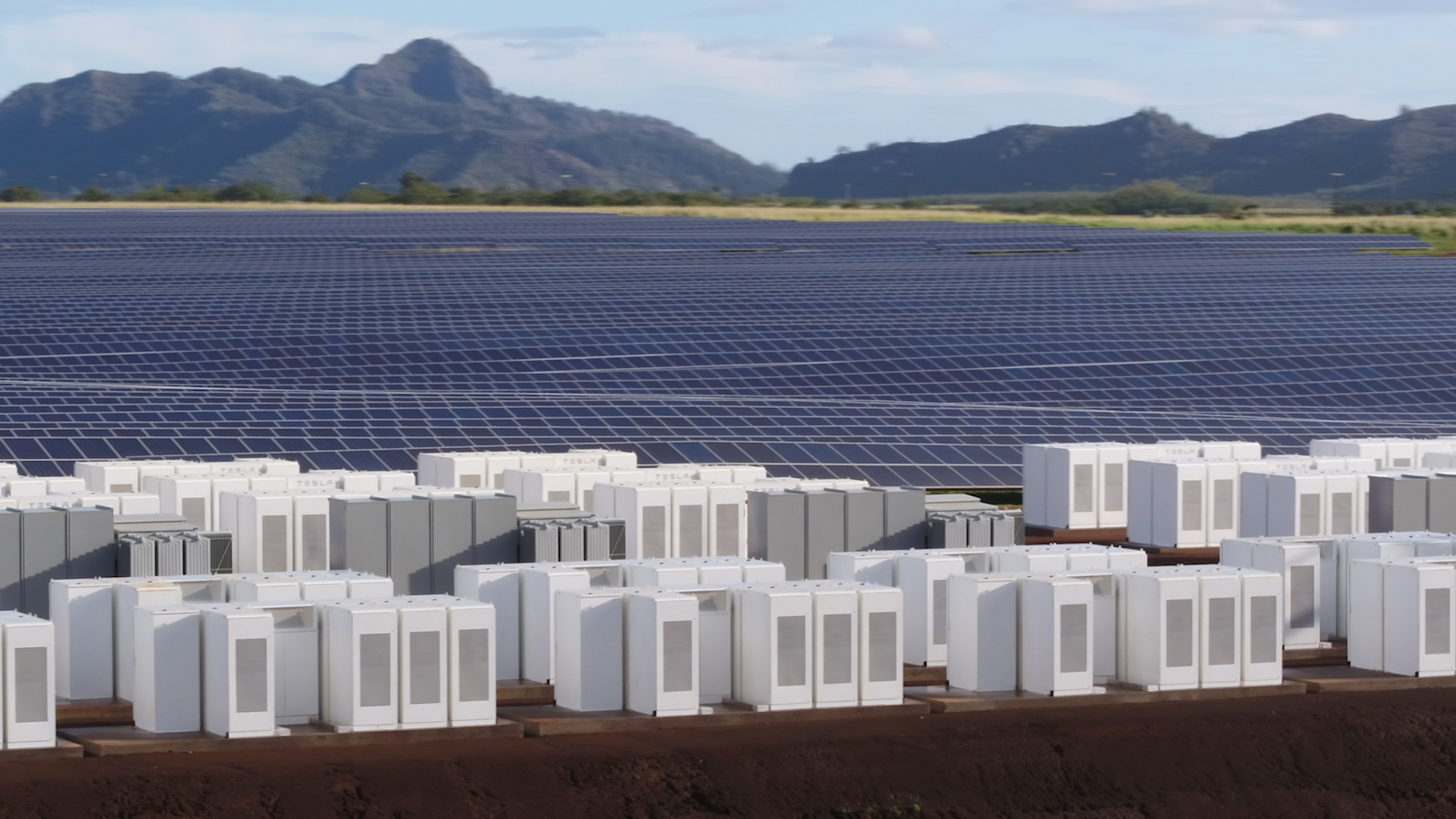Over the past 18 months, we’ve witnessed a remarkable convergence of technologies—artificial intelligence, vibecoding, digital twins and next‑generation predictive maintenance—poised to transform how we generate, store and manage energy. I see some overarching forces at play:
- AI‑Powered Operational Excellence
- Vibecoding‑Driven Innovation
- Data‑Rich Forecasting & Orchestration
- Scaling Challenges & Opportunities
Below, I outline how each is already delivering measurable financial returns in the United States—and offer bold, specific predictions for what comes next in solar and battery storage. Given the importance and magnitude of the topic, it is posted in four parts.
1. ⚙️ AI‑Powered Operational Excellence
- Data‑Center Cooling → Industrial & Utility Applications
DeepMind’s AI reduced energy used for cooling Google data centers by 40%, improving overall PUE by 15%—an efficiency leap that Google estimates will save hundreds of millions of dollars over time. Translated to energy‑intensive assets (e.g., 100 MW of thermal load), a similar 40% cut in cooling demand could yield $4–6 million in annual O&M savings at current electricity rates. - Robotics + AI in Construction
SoftBank led a $130 million Series C for Terabase Energy to scale its Terafab platform, combining robotics and AI to prefabricate and install solar farms. By trimming 25% off construction CapEx and 30% off project timelines, Terafab can save over $20 million per 100 MW plant—freeing up capital for follow‑on projects or higher returns. - AI‑Driven Digital Wind Farm
GE’s Digital Wind Farm leverages AI‑based analytics and turbine control adjustments to boost annual energy production (AEP) by up to 5% at a 30 MW site and 2% at a 22 MW site—projected to generate $650 thousand in incremental revenue over the remaining lifetime of the Japanese projects cited.
These AI‑powered interventions are already shifting the energy landscape—delivering multi‑million‑dollar savings and revenue uplifts, shortening project schedules, and setting new benchmarks for operational performance.
2. 🤖 Vibe Coding in Energy
Democratizing software creation for domain experts
Vibe coding is an AI‑driven technique—coined by Andrej Karpathy in February 2025—where engineers describe desired functionality in plain English and a large language model generates production‑ready code. In energy, vibe coding slashes development cycles, empowers analysts, and drives millions in cost avoidance.
Key Enterprise Results:
- ZoomInfo (400 engineers): 33% suggestion‑acceptance and 20% of all new code generated by Copilot, yielding 20% time savings (~160 hrs/engineer/year) or $24 k/engineer annually
- ANZ Bank (100 engineers): Six‑week trial saw a 42.36% faster task completion rate (17.9 min vs. 30.98 min), translating to $600 k in annual savings for a 10‑engineer team
- Meta‑Analysis: Broad deployments report 50% faster pull‑request merges and 55% shorter time‑to‑production, saving $80 k+ per mid‑sized project
Energy Use Cases:
- Grid‑Analytics Pipelines: Auto‑generated ETL scripts for smart‑meter data cut build time by 25%, saving $50 k/year for a 5‑developer team.
- SCADA Integration: Building API connectors and fault dashboards now takes <2 hrs vs. 8 hrs manually—$10 k+ saved per developer/year.
- PPA Arbitrage Tools: Custom power‑purchase‑agreement optimizers launch 60% faster, capturing $200 k in extra margin on a 200 MW portfolio.
For a 10‑engineer group billing $150/hr, 25% time savings equals 4 000 hrs or $600 k in labor avoidance, plus earlier feature launches that can net $200–400 k in incremental margin.
3. 📊 Data‑Rich Forecasting & Orchestration
Turning volatility into strategic advantage with AI
As renewables penetration grows, precise forecasting and streamlined interconnections are vital. AI‑infused digital twins and advanced load‑forecast models unlock tens of millions in annual savings and free up capital.
- AI‑Integrated Digital Twins: 67% of smart‑grid twins embed ML for anomaly detection and real‑time control adjustments, delivering $2–5 million in annual O&M savings per GW
- Advanced Load Forecasting: Hybrid EMD‑BI‑LSTM models improve day‑ahead accuracy significantly over naïve benchmarks—minimizing imbalance penalties and fuel costs by $10–20 million per ISO per year
- Interconnection Queue Modernization (AI4IX): DOE’s $30 million AI4IX program targets the 1 570 GW U.S. backlog (5–7 year delays), aiming to cut approval times to <2 years and unlock over $1 trillion in stranded clean‑energy capex
By embedding AI from digital twins to interconnection automation, energy operators transform uncertainty into opportunity—driving tens of millions in savings, accelerating project paybacks and future‑proofing the grid.
4. ⚡Scaling Challenges & Opportunities: Solar + Storage Focus
- Record Solar Growth, AI‑Optimized
In 2024, the U.S. added nearly 50 GW dc of solar PV—up 21% YoY—delivering ~80 TWh of new clean energy. Leading developers now layer AI‑powered generation forecasting and panel‐angle optimization on these installations, boosting annual yields by 3–5% (equivalent to an extra 0.05–0.08 TWh per GW) and adding roughly $20–$30 million in incremental revenue per 1 GW of capacity . - Surging Battery Storage, AI‑Managed
The U.S. commissioned 10.3 GW of utility‑scale battery storage in 2024 (bringing cumulative capacity to 26 GW, +66% YoY) . AI‑driven charge/discharge algorithms—using real‑time price forecasts and grid‐stress indicators—are increasing arbitrage revenues by 15–20%, or $4.5–$6 million per GW annually, compared to static scheduling. - Premium for AI‑Enhanced Hybrids
Co‑located solar + storage hybrids already command 20–30% higher valuations. When combined with AI orchestration—coordinating solar output, battery dispatch and market bids—projects see IRRs climb from 10% to 13–15%. For example, the 690 MW Gemini Solar + 380 MW/1,400 MWh battery project uses AI to dynamically shift energy into high‑price windows, delivering an additional $10–$15 million in annual value over baseline forecasts . - AI‑Driven O&M Savings
Predictive maintenance models on inverters and transformers—trained on vibration, temperature and performance data—are cutting unplanned O&M events by 20–25%, saving $5–$8 per MWh in repair and downtime costs. On a 1 GW portfolio, that translates to $5–$10 million in annual operating‐expense avoidance. - Policy & Tax Incentives Accelerated
The Inflation Reduction Act’s 30% ITC for solar + storage—combined with AI‑documented domestic content compliance—earns projects 200–300 bps of IRR uplift. AI systems also automate reporting for “energy community” criteria, reducing finance‐closing timelines by 15–20% (roughly 2–4 weeks faster).
Together, these AI‑powered enhancements transform solar and storage from growth engines into high‑performance, cash‑generating assets—delivering both scale and profitability to early adopters.
Bold, Specific Predictions for 2026–2030
- By Q4 2026, 20–25% of new U.S. utility‑scale solar farms will deploy robotics + AI O&M platforms (e.g., Terabase’s Terafab), cutting project CapEx by 25% and O&M spend by 15%, thereby adding roughly $20 million NPV per 100 MW installation
- By 2027, 50% of energy‑sector software teams will leverage AI code‑assistant tools (GitHub Copilot‑style), reducing development costs by $600 k per 10‑engineer group annually (based on ANZ Bank’s 33% suggestion acceptance and 55% faster merges)
- By end‑2028, U.S. utility‑scale battery storage capacity will exceed 60 GW—up from 26 GW in 2024—with ≈52 GW dedicated to price‑arbitrage use cases, generating an estimated $6 billion every year at current spread levels
- By 2030, co‑located solar + storage hybrids will account for 35% of all new U.S. capacity additions (vs. 18% in 2024), delivering roughly 150 TWh/year of firmed renewables and underpinning over $10 billion in corporate PPA commitments annually.
Why This Matters—And Why Now
- Significant capital flow: Global investment in the low‑carbon energy transition reached $2.1 trillion in 2024 (up 11% YoY), with the U.S. contributing $338 billion to renewables, EVs and grid infrastructure—a 12% increase from $303 billion in 2023. Investment in grid digitalization alone (transmission, distribution and advanced control systems) topped $390 billion, underscoring the industry’s pivot to AI and analytics.
- Cost of inaction: A typical 100 MW solar + storage project operating at a 20% capacity factor generates ~175,000 MWh/year. At a $40/MWh margin, delaying commissioning by just one month forfeits roughly $580 k in revenue—and erodes project NPV by 2–3% over its lifetime.
- Risk‑adjusted gains: Predictive maintenance and digital‑twin forecasting cut unplanned downtime by 20% and boost annual energy yields by 3–5%. For a 1 GW portfolio, that translates to $2–3 million in additional cash flow each year.
- Policy & tax incentives: The Inflation Reduction Act offers a 30% Investment Tax Credit for solar + storage projects that meet domestic-content and energy‑community criteria, adding 200–300 basis points to IRR. Meanwhile, FERC Order 2222’s market access for distributed energy resources opens new revenue streams in ancillary and capacity markets—boosting project returns and de‑risking grid interconnection.


